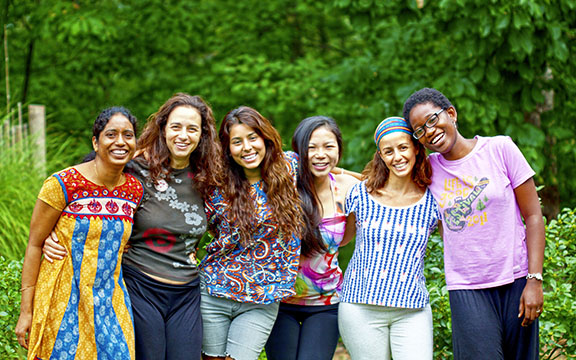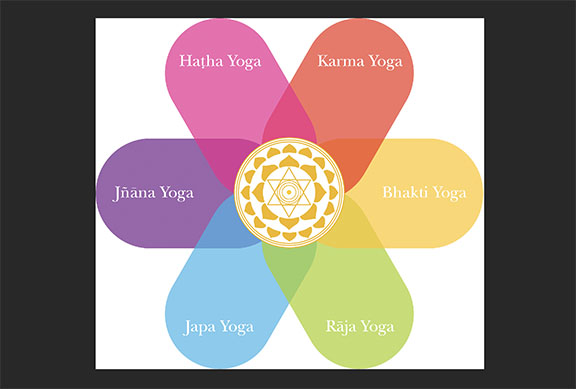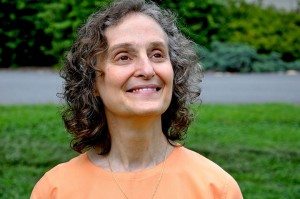 In October 2020, Swami Karunananda gave the following talk—during the San Francisco Integral Yoga Institute’s 50th anniversary celebration—on the future of the Integral Yoga teachings and organization.
In October 2020, Swami Karunananda gave the following talk—during the San Francisco Integral Yoga Institute’s 50th anniversary celebration—on the future of the Integral Yoga teachings and organization.
A reporter once asked me to describe Swami Satchidananda’s legacy, clearly expecting me to say something about the Light Of Truth Universal Shrine (LOTUS), or Yogaville, or bringing Yoga to the West—things one could readily see. But my immediate reply was: “He transformed lives and saved souls. That was his legacy.” He not only imparted the highest teachings, but he did so in such a way that made them accessible and doable. Encouraged, we not only learned about spiritual life, the miracle was that we practiced it. Such was his grace.
How did he accomplish that, again and again, in the lives of thousands of seekers all around the globe? A glance, a word, or a touch was all that was needed. The first time I met him was on a retreat in Santa Cruz. I felt fulfilled in him all that my own soul longed for—peace, stability, and an all-embracing love. That was enough to set me on the path and give me hope that one day, I, too, could attain that.
How did he become like that? Practice, practice, practice. He once told us that his spiritual journey may appear to have been easy this time, but that was because he probably had done a lot in the past—undergone a lot of hardship and suffering. He said everyone who goes the distance, all the great teachers that have graced the earth, have had to undergo that. With that in mind, it might help us to think of the current world crisis as a crucible for our own purification and transformation.
How does that relate to the future of the Integral Yoga teachings and organization? It all depends on us, each and every one of us. Everything begins at the level of the individual. The Upanishads state that: you sow a thought and reap an action. Actions repeated become habits. Our habits define our character and our character, in turn, determines our destiny. And our combined cumulative destiny determines the world in which we live. If we wish to preserve and further the Integral Yoga teachings, it is up to each and every one of us to make a personal commitment for maintaining a regular, daily practice: time to center the mind, to energize the system, and to strengthen and relax the body so that we can be easeful, peaceful, and useful as we move through life.
A little every day is a better than a lot once in a while. Better a smaller goal for practice with a firm commitment than a big goal with a weak commitment. That way, each one of us can become a repository for these teachings and a living sanctuary of peace.
When Swami Satchidananda first arrived in America in 1966, Yoga was more of a fad, something exotic that the youth were exploring. And what do we see now? An estimated 300 million people are practicing Yoga worldwide today. So, what happened between then and now? Nothing less than a cultural revolution and a shift in global consciousness! Integral Yoga was there at the beginning and helped shape the modern Yoga movement.

(Photo: Swami Satchidananda and students in early 1970s.)
When Swami Satchidananda (Sri Gurudev, as he’s known by his students) first arrived in America, he was surrounded by a group of unkempt, undisciplined souls. He was warned against associating with those “hippies,” those “pigs,” and told that all respectable people would leave if he continued to do so. But he had the vision to see the hidden yearnings of their hearts, the tiny flickers of light that were desperately sputtering to shine forth. After a moment’s reflection, he replied, “Well, if they are pigs, then I must be a mama pig, because they are my kids.” That was the defining moment that described his connection to us. Over the years, whenever that story was recounted, tears would tenderly flow from his eyes.
At one press interview that I hosted for Sri Gurudev, about a dozen disciples were present. The reporter looked around the room and asked Sri Gurudev, “Do you really know these people well?” Slowly, Sri Gurudev turned and gazed deeply at each one of us, and then he turned to the reporter and with a twinkle in his eye said: “Yes, I know them all very, very well.”
And he did, and he knew what we needed. He understood us: our condition, capacity, and culture—and the confusion and yearning for connection that were there, so he did two things:
1) He adapted the ancient teachings for us, selecting what was suitable and presenting it in such a way that it was accessible and doable.
2) He established Integral Yoga Institutes not simply as teaching centers where we would learn about Yoga, but as spiritual homes where we could live it every moment. They were havens where we could find support, inspiration, friendship and fun, on the journey toward greater well-being and spiritual awakening. That was the defining decision that shaped the Integral Yoga organization and underscored the importance and role of sangha (spiritual community).
I feel these two points are key in considering how to preserve the Integral Yoga teachings and the organization as we move into the future. I would like to explore both these points a little more. First, the teachings.
The six branches of Integral Yoga comprise a complete package for body, mind and Spirit. This is what sets us apart from so many other approaches. I feel that as we move forward, we should find ways to share more the totality of who we are. The entire world is yearning for peace. It is the need of the hour and that is the gift that Integral Yoga has to offer.
Raja Yoga embraces all six branches; Sri Gurudev used to say that Integral Yoga is Raja Yoga. It presents a complete philosophy and psychology of Yoga, an eight-fold path that addresses every level of our being, all aspects of life.

(Diagram: Six branches of Integral Yoga)
Karma, Bhakti and Jnana Yoga address the three facets of human nature: the will, emotions, and intellect. Karma Yoga exhorts us to lead a dedicated life of service. One of Sri Gurudev’s mottos, taken from the Bhagavad Gita, was: Tyagat shanthir anantaram, which he translated as: “The dedicated ever enjoy supreme peace; therefore, live only to serve.” Bhakti Yoga involves the cultivation of faith, devotion, and surrender to the Divine. Jnana Yoga includes study, analysis, and discernment so we can make good choices on the path and, ultimately, distinguish between the Real and the unreal, between what is permanent and what is temporary.
Japa Yoga utilizes the power of sound to purify, strengthen, and harmonize the body and mind, so we can experience Self-realization.
Hatha Yoga includes postures, breathing techniques, deep relaxation, and cleansing practices to optimize the body’s health and makes it fit for meditation. Hatha Yoga is the doorway through which most people find Yoga. Sri Gurudev designed the Hatha Yoga class to take us deeper, kosha by kosha, from the physical to the vital to the mental levels, and then beyond to experience the peace within.
I feel the challenge in preserving the teachings is this: How do we honor our lineage and retain the purity of Sri Gurudev’s transmission, while adapting to the times and sharing from our own experience? This is a big topic that has been discussed over the years in our organization and something we, as individuals, ought to consider as well. Sri Gurudev gave simple and clear guidelines for our Hatha Yoga classes. He created a balanced routine that addressed the entire body. He said: “Never skip pranayama and meditation; they are food for the soul.” If time is short, we could reduce the asana section, doing some poses one day, others the next. As we advanced in our practice, we could do fewer poses and variations, but hold them longer, and spend more time in pranayama and meditation. Our practice would prepare the body and mind, making them fit to be of service to others, so we could be easeful, peaceful, and useful in life.
There is so much information readily available today, it can be challenging to stick to one lineage. Sri Gurudev used to say that, “The entire universe is a universe-ity. Draw silent lessons from all around you.” Because we are devoted to our path, it doesn’t mean that we stop learning and exploring—but it takes keen discernment to do so and retain the spirit and intention of our tradition.
The ultimate aim of spiritual practice is to make the mind steady. When the mind is calm and clear, it resembles a pristine lake. We can see through the waters to the depths of our being and experience our true nature: perfect peace and joy. If in the very name of practice, we keep changing what we are doing, we can subtly encourage the restless tendency of the mind. So, our method becomes counter-productive to our goal.
Our unique contribution in the world of Yoga has been providing an integrated and holistic system for body, mind, and Spirit and creating centers where people can come together, learn about, and experience the fullness of Yoga. This is what the world needs now and will need even more in the future—someplace to connect that is greater than ourselves and gives meaning to life. It is our combined strength, wisdom, and perseverance as a sangha that has enabled us to grow and will see us through these difficult times and for millennia to come.
We are passing through a global dark night of the soul. On the spiritual level, the dark night refers to a period of crisis before a great spiritual awakening occurs. It is a time to learn lessons from past mistakes and to find creative solutions to old and new challenges. It’s a time to hunker down, hold fast, persevere and have faith.
Sri Gurudev once told us that when he was young, he used to repeat the following affirmation: “Every day in every way, I’m getting a little bit better.” In like manner, as we emerge from this global crisis, little by little, we can re-vision ways Integral Yoga can serve locally and globally, individually and organizationally. The Tirukkural, which Sri Gurudev often quoted, states: “Don’t get discouraged thinking a job is difficult of execution; perseverance will give you the ability to do it.” The teachings and practices of Integral Yoga can be a source of strength, stability, hope and comfort, as we rebuild our lives and heal our societies.
No one knows what the future will look like. Current challenges may give rise to a collective yearning for residential centers, as a model for greater physical, emotional and economic wellbeing, as well as for spiritual support and awakening. Sri Gurudev’s vision at the beginning of the Integral Yoga Institutes may serve as a blueprint for the future. Wherever the journey takes us, faith in God, Sri Gurudev and one another will light the way and will give us the courage to face any challenges that may arise.
About the Author:
 Swami Karunananda is a senior disciple of Sri Swami Satchidananda. In 1975, she was ordained as a monk into the Holy Order of Sannyas. She has had almost 50 years experience teaching all aspects of Yoga and specializes now in workshops, retreats, and teacher training programs that focus on the science of meditation, the philosophy of Yoga, personal transformation, and Yoga breathing techniques for better health and well-being. She developed, and for 30 years has taught, the Integral Yoga Teacher Training programs in Raja Yoga and in Meditation.
Swami Karunananda is a senior disciple of Sri Swami Satchidananda. In 1975, she was ordained as a monk into the Holy Order of Sannyas. She has had almost 50 years experience teaching all aspects of Yoga and specializes now in workshops, retreats, and teacher training programs that focus on the science of meditation, the philosophy of Yoga, personal transformation, and Yoga breathing techniques for better health and well-being. She developed, and for 30 years has taught, the Integral Yoga Teacher Training programs in Raja Yoga and in Meditation.
Swami Karunananda served as president of Satchidananda Ashram–Yogaville in Virginia and in California, as well as director of the Integral Yoga Institutes in San Francisco and in Santa Barbara. She currently serves on the Board of Trustees, and as the chairperson of the Spiritual Life Board at Satchidananda Ashram–Yogaville, Virginia.
Interested in fostering interfaith understanding and harmony, she is featured in the interfaith documentary entitled, “With One Voice.” She also compiled and edited the Lotus Prayer Book, a collection of prayers from various faith traditions, and Enlightening Tales as told by Sri Swami Satchidananda. She served as contributing editor for The Breath of Life: Integral Yoga Pranayama, as well as a senior writer for the Integral Yoga Magazine. In her book, Awakening: Aspiration to Realization Through Integral Yoga, she describes the spiritual path and provides guidance for the journey.

